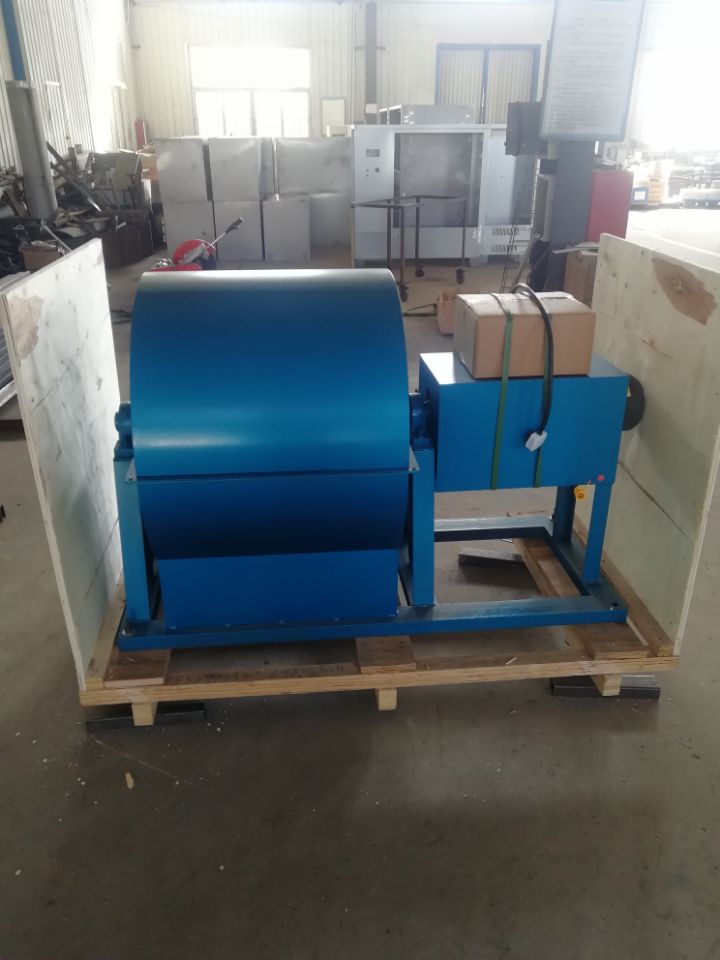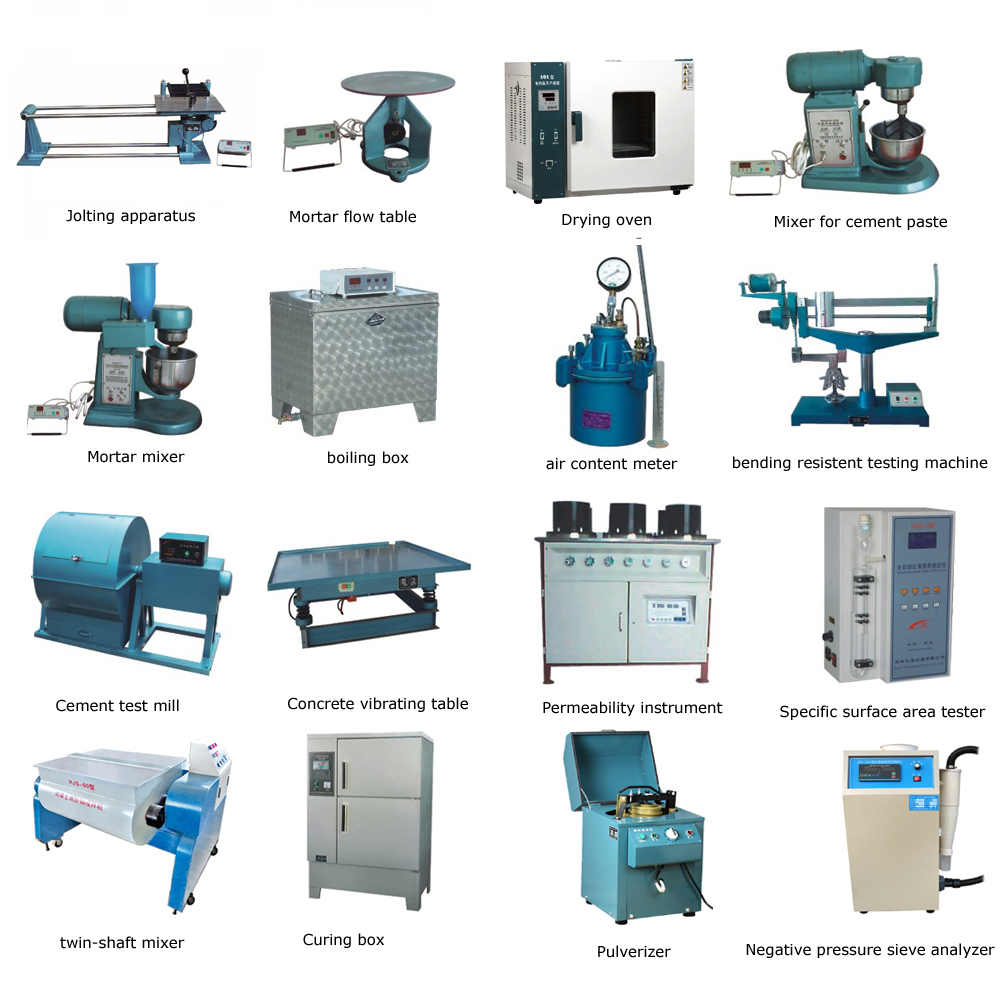Model SYM-500
Laboratory Ball Mill 5kg capacity
The Laboratory Ball Mill is primarily designed for grinding pigments and cement. The material is ground at a specific speed for a specific period using a specific quantity of grinding steel balls.
The size range of balls provided to support the tests is less than 7 mm. The size of ball varies with the requirement of the tests and complied standard.The Laboratory Ball Mill capacity also varies according to the application and ranges 5kg.
The equipment is provided with a counter for recording the number of revolutions.
Apart from the cement industry, it is also used in the paint, plastic, granite and tile industries.
Laboratory Ball Mill is primarily designed for grinding pigments and cement. The material is ground at a specific speed by using a specific quantity of grinding media (steel balls) for a specific period. The equipment is used for making the ground cement samples in the laboratory. Apart from the cement industry, it is also used in the paint, plastic, granite and tile industries. The equipment is provided with a revolution counter for recording the revolutions.
The Laboratory Ball Mill is mainly designed for grinding pigments and cement. The material is ground at a particular speed for a specific period using a precise quantity of grinding steel balls. The size range of balls provided to assist the tests is less than 7 mm. The size of ball differs with the requirement of the tests and complied standard. The Laboratory Ball Mill capacity also differs according to the application and range 5 kg.
The equipment is offered with a counter for recording the number of revolutions. Besides the cement industry, it is also used in the paint, granite, plastic, and tile industries.
Laboratory Ball Mills supplied are primary designed for grinding pigments. The material is ground at a specific speed by using a specific quantity of grinding media (Steel Balls ) for a specific period.The equipment is used for making the ground cement samples in the laboratory. Apart from the cement industry, it is also used in the paint, plastic, granite and tile industries.The equipment is provided with a revolution counter for recording the revolutions.
Description
This ball mill is used to grind the cement clinker in lab, it’s an indispensable equipment in cement factory to test the cement clinker physical strength and chemical characteristics, also it can be used to grind other materials. It features compact structure, easy maintenance, easy operation, reliable working performance, good seal, low noise, it can stop automatically.
Structure
The grinding machine is comprised of the shielding cover, grinding barrel, supporting base, control cabinet.
1. Shielding cover: made of iron plate, consisted of upper and lower chamber, the door is on the chamber, the grinding door is demountable, there is hopper at the bottom to receive the grinded material, the shaft is sealed by felt-ring seal to protect the dust from flying around.
2. Grinding barrel: it’s comprised of made barrel, face plate, stripper plate, bearing, bearing base, coupling, gear reducing motor
3.Supporting seat: it’s a structural component consisted of U-bar to support the grinding barrel and cover, there is 6 Φ28 foundation bolt holes reserved to fix the machine.
Technical specifications
SYM-500X500 cement test millThe test mill has the characteristics of compact structure, convenient operation, simple maintenance, reliable performance, good dustproof and soundproof effect, and automatic stop controlled by timer.Technical Parameters:1. Inner diameter and length of grinding cylinder: Ф500 x 500mm2.Roller speed: 48r / min3. Loading capacity of grinding body: 100kg4. One-time material input: 5kg5. The granularity of the grinding material: <7mm6. Grinding time: ~ 30min7. Motor power: 1.5KW8. Power supply voltage: 380V9. Power supply: 50Hz
Optional Accessories
Grinding ball quantity
Steel ball 60kg:Φ40mm,40pcs;Φ50mm,33pcs;Φ60mm, 22pcs;Φ70mm, 8pcs;
Forging 40kg:Φ25mm*35mm
Operation of cement test mill
Weigh the clinker, gypsum or other materials to be ground.
Before entering the mill, the materials are crushed to make the particle size of the materials less than 7mm.
Remove the remaining materials in the mill, and then pour the crushed materials.
Close the grinding door tightly, tighten the compression nut, be careful not to make the grinding door skewed and leak, and then close the cover door.
Adjust the grinding time according to the grinding needs, and it cannot be adjusted during operation.
Start grinding. If it is required to sample and inspect the fineness or specific surface area of the material during the grinding process, it needs to be stopped for 2 to 3 minutes, and the grinding door shall be opened for sampling after the powder has settled.
If the grinding door is not aligned with the housing door, the jog switch can be used Adjustment. When the grinding reaches the specified time, the mill should stop automatically.
After stopping, replace the grid orifice plate, and then start the mill to throw the material until it is clean. Wait for about 5 minutes to pull out the hopper and take out the ground materials.
If grinding materials with special requirements, dry slag or sand should be put into the grinding drum for 5 minutes to clean the materials stuck to the steel balls before grinding.
Notes:
1. Frequently clean up the dust on the outer surface of the mill and the inner surface of the casing.
2. Check all parts of the fasteners at any time, if they are loose, they should be tightened in time.
3. Regularly check the lubrication system, change the reducer lubricating oil (No. 40 oil) every three months, and replace the bearing lubricating grease (calcium-based or calcium-sodium-based grease) every six months.
4. During the operation, you should always pay attention to whether there is abnormal noise, impact sound, whether the gear reducer motor, bearing temperature rise is too high, smoke, odor, etc., if any, you should immediately cut off the power supply, find the cause, and remove the fault. To resume operation.
5. Frequently check the sealing gaskets and the sealing ring on the grinding door cover 4, if they are damaged, they should be replaced in time.
6. The control box should be kept dry, and the power contact should be checked frequently, and the grounding should be reliable.
Installation and debugging method
After unpacking the test mill, wipe the surface of the whole machine clean, and carefully check whether the gear reducer motor, mill, housing, bearing seat, etc. are damaged during transportation, and whether the fasteners are loose or not, they should be tightened. Then, when hoisting, the rope should be tied to the seat, not to the casing, shaft, or motor, so as not to damage the parts.
When installing, clean the oily dirt on the base of the support first, and the surface of the cement foundation should be flat. After the support is placed stably, fasten it with anchor bolts (steel pads are allowed for leveling).
Before the test run, check the mill and the cover. If there is any collision, adjust it so that it does not touch; check whether the grinding door cover is tightly closed and not loose; check the lubrication of the bearing seat and the geared motor. If there is no lubricating oil, it should be filled At the indicator line in the oil window.
Rotate the mill by hand for more than one week to check whether the mill has collisions, inflexibility and other abnormal conditions.
Power on the test machine, the mill should run in a clockwise direction (stand on the front of the test mill and look from left to right). After starting, if the running direction is found to be inconsistent with the requirements, you can disconnect the power supply. After the motor stops rotating, turn the power supply off. Any two wires of the wires are interchanged, and then restarted. The test mill should be in good no-load condition before adding the load gradually.
Related products:



Post time: May-25-2023





